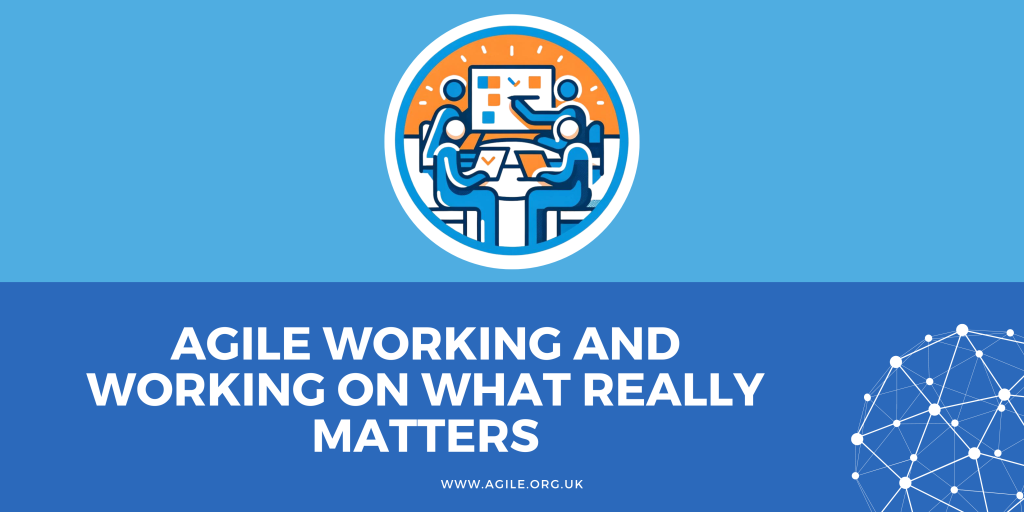Readers of this site will be well versed in what ‘Agile Working’ or ‘New Ways of Working’ is all about. Essentially it is about breaking down the traditional barriers, adopting different management styles, thinking differently about workplace design and looking at effective approaches to improving collaboration and communication.
Traditional working practices have more recently been coined as ‘the pre COVID-19 era way of working’ and many can relate to working practices before the pandemic hit the world and the completely new thinking after it. The rapid onset of COVID-19 required a response that determined the speed of the change required and thinking about the cultural impact of the change that was required and its magnitude, rarely crossed the minds of those tasked with implementation.

A rush to be agile has left a lot of scars and challenges
That scenario has unfortunately left a lot of scars and challenges that are being discussed in a variety of organisations up and down the land today. Some say the ‘agile experiment’ that soon became an urgently needed solution has been proven to not work at all and businesses are telling their employees they must come back to the office. Some are forcing the workforce to be ‘more agile’ based on a very questionable understanding of what that means and with no or minimal considerations of the impact. Unfortunately, decision making is now at the mercy of the unwritten rules that have surrounded ‘agile working’
Reverting back to presenteeism?
There is no doubt that experiences during the COVID-19 pandemic mean people now think differently about work-life priorities and it is harder than ever to recruit and retain staff when the only employment offer is the pre covid traditional working environment. A three month trial of a four day week was conducted by South Cambridgeshire District Council, but recently the government said councils should stop any four-day week trials immediately and ruled out adopting the practice in future to ensure taxpayers’ money is well spent. Is this a form of ‘presenteeism’ or the following of an unwritten rule that says value for money requires people to be in attendance and not what they actually achieve? Myths and legends related to agile working continue
The ramifications of the speed and unplanned nature of the move to agile in some businesses will be felt for some time. Was the culture of those businesses in the best place for employees to see, hear and feel the potential benefits they would gain from the new way of working or were there too many cultural barriers in existence? Were those barriers so entrenched that they negatively impacted then and are still doing so now? More importantly, will leaders think “they have done it now” and they are over the worse?
Get the company culture right and ideas and decisions happen much quicker and you can make future changes more likely or easier – but unfortunately culture has become particularly theoretical and academic with leaders and managers, unable to successfully navigate the complexities of the subject.
“Culture is not an initiative. Culture is the enabler of all initiatives” — Larry Senn
It is well known that one of the biggest challenges of culture change is overcoming resistance. For a lot of people they fear change and change in the workplace is no exception. From introducing a new software to changing their daily working practices or modernising the company values, fear of the unknown and unexpected is difficult for some. Maybe if you considered co-designing the culture based on what everyone agreed was needed to successfully implement something, there may just be more success. Working on what really matters (the culture) is the foundation for a successful agile working environment
A co-designed culture to achieve success
Engaging everyone in the design of the culture you need to deliver a successful ‘agile transformation’ ensures that people have a stake and therefore an incentive to make it work.
Our ‘Culture by DESIGN’ approach is a tried and tested step by step framework to getting any culture journey started. It is based on one single premise – that everyone needs to be involved in the culture conversation at every step.

Employee engagement is required at every step.
Step 1 – Define
As with all things, before you can design anything you need to DEFINE what it is you need. Understanding what the ‘Critical Cultural Characteristics’ are for your agile organisation is key. This first step is critical and should involve everybody.
Simply documenting the words that will describe the cultural aspirations are not enough. Businesses we have supported have sometimes chosen the same words as others such as collaborative, trusting, flexible or autonomous but the real work of this exercise is to collectively understand and agree on what those words mean in the context of the business for its future success.
Sep 2 – Explore
Having agreed your cultural aspirations, you now need to identify where your culture currently stands in relation to it – again, engaging everyone in the process. Culture is most practically described as ‘the way we do things around here’ so exploring how things are currently perceived to be ‘done around here’ by the workforce will provide a form of gap analysis between where you are now and where you want to be.
Step 3 – Surface (the unwritten rules)
Whilst there will be policies, procedures, guidelines and even a set of values that exist to inform your employees of what is expected with regards to their behaviours and attitudes, there is only really one thing, rarely spoken or thought about, that drives a culture. The unwritten rules.
Unwritten Company Rules are the routines or behaviours followed by the majority of the employees. Sometimes they may not align with the organisational expectations, values, or any code of conduct. It can simply be described as employee’s belief of ‘this is the way we do things here’. This ‘perception’ is powerful enough to drive behavioural change in people but often not openly spoken about. These unwritten rules are equally as important as any written rules
Step 4 – Integrate
Workplace culture does not happen in a vacuum. It permeates and impacts on everything. At the same time, activities conducted in one area of the business impacts on the culture. Whilst departmental working enables areas to focus on their area of a business for example, ultimately it is the sum of the parts that make for success. When you move to agile working, there is an impact on all other areas including the culture. Integrating your cultural aspirations across the key enablers of your business requires a constant holistic and balanced view. Integrate your cultural aspirations across the whole business.

Step 5 – Grow your advocacy
Cultural focussed discussions across the whole business and at every level, enable change to happen. Having peers and colleagues who can facilitate those conversations is a powerful tool. Cultural advocates are such people. They bring together two things. An understanding of how culture and unwritten rules influence reality and, more importantly, they are respected by their peers and colleagues and are a trusted. People’s perceptions can only be positively changed by positive a ‘lived experiences’ – by seeing, hearing and feeling a positive rather than making an assumption, influenced by an unwritten rule, that it will be negative. Leaders saying that agile working is beneficial for all the right reasons is simply not good enough during transformational change. Trusted cultural advocates can help the much needed conversation take place and are more relatable and believable.

Step 6 – Normalise
Once you have surfaced the negatively impactful unwritten rules and provided more positive lived experiences that can be believed, the task of normalising those positive unwritten rules begins and in doing so, helps mitigate against some of those cultural barriers and hurdles.
Transformation is about creating better myths and legends
Unfortunately, conventional wisdom is often wrong, especially in the workplace. Transformation and a lot of other well-intentioned business and leadership strategies circulates offices and cubicles and have exhausted coffee break conversations. While some of it is sound, much of it is not only off the mark, but has actually been disproven. The problem is though, the unwritten rules that exist beneath the surface remain in play and are still believed to be true. Help your transformation agenda to run a little easier – consider your culture and put it at the heart of your business thinking for a better chance of success.
Purpose for the change should motivate, your values should guide you but your culture defines you and your success

Richie Maddock is a Founder and Managing Director of Lynchpin & Associates Ltd, a transformation and change consultancy that specialises in putting workplace culture at the heart of business success.
Operating for over 20 years supporting organisations from all sectors, Lynchpin have deployed their ‘Culture by DESIGN’ methodology with demonstrable and practical success when helping organisations with their agile aspirations. www.lynchpinsolutions.co.uk













